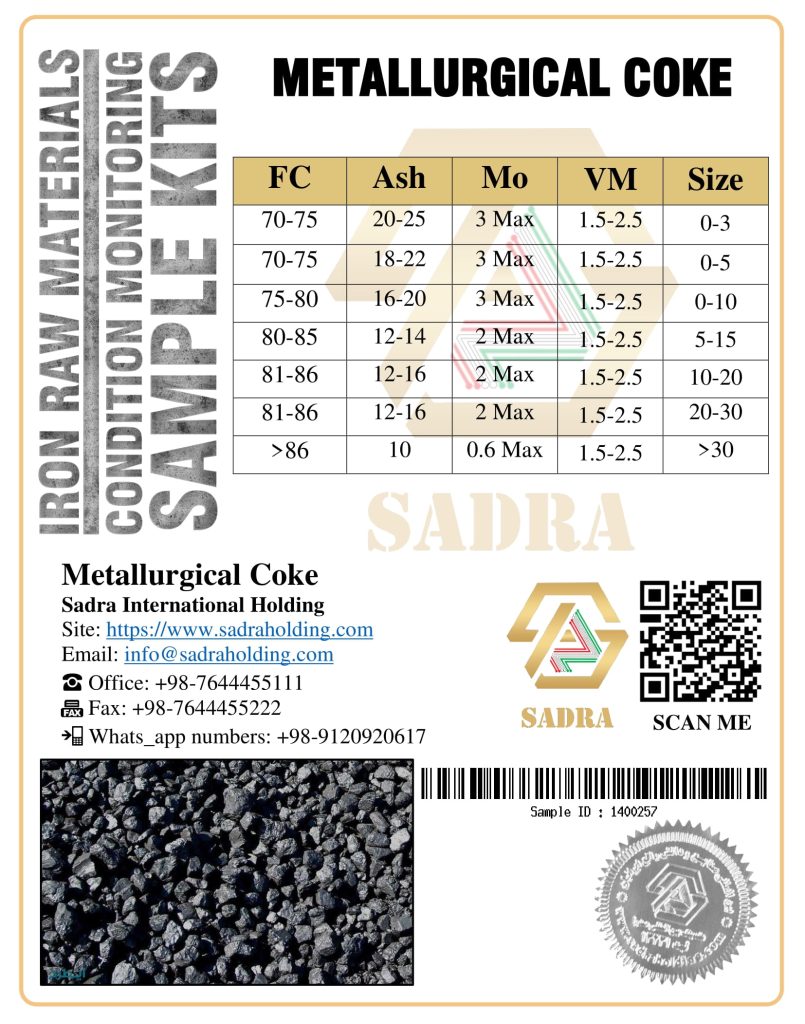Coke is a substance with very high carbon and few impurities that is used as fuel.
Coke is a solid carbonate material obtained from low-ash and low-sulfur bituminous coals. The coke obtained from coal is gray in color, hard and porous. Of course, coke also exists naturally, but the most commonly used coke is the coke made from coal by humans. Special coals are used to produce metallurgical coke, and the properties of the coal determine the properties of the produced coke. The inorganic material of coal is called sterile and remains in the coke as ash and affects the performance of the blast furnace.

The presence of ash in coke increases the consumption of coke and limestone in the blast furnace and reduces the production capacity of coking batteries.
Coke is one of the most important and expensive raw materials used in the process of iron production, so that for every ton of raw iron produced in the blast furnace, about half a ton of coke is consumed, and since more than 70% of the world’s steel is produced through iron production. Coke has a special industrial and economic importance.
Metallurgical coke is a porous substance and is used in blast furnaces, and it is one of the main uses of coke in metallurgical industries. Coke in the blast furnace has different roles of providing energy, regenerating iron ores, creating porosity for the passage of reducing gases, and carburizing cast iron. Coke is also used as fuel and regenerating agent in Kopel furnace. It should be noted that coke is also used in casting industries.
Coke has a percentage of sulfur and phosphorus, so coke is the most important factor in introducing sulfur and phosphorus into the steel production process.



